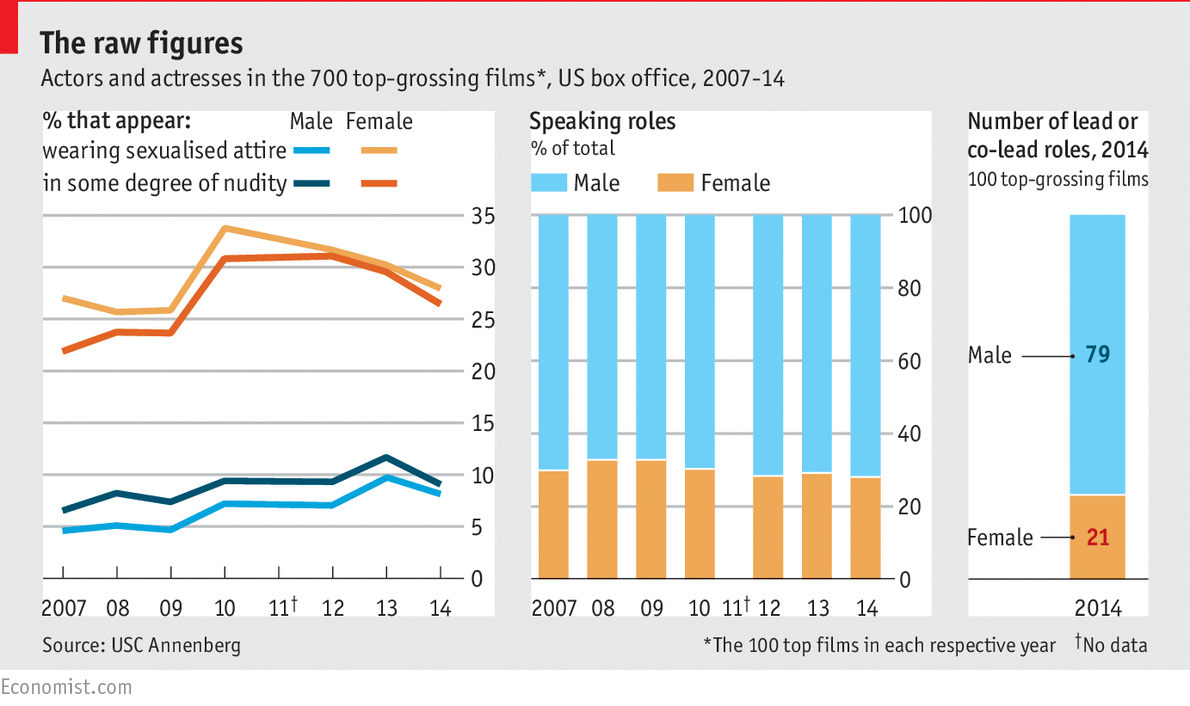Daily chart

Male screen-actors have been complaining recently of their increased objectification by female fans. Henry Cavill, the current big-screen incarnation of Superman, stated that it represents a “double standard”. Kit Harington, a lead actor on the television series “Game of Thrones”, protested: “to always be put on a pedestal as a hunk is slightly demeaning. It really is, and it’s in the same way as it is for women.”
They may have a point. Data collected by USC Annenberg (University of Southern California) demonstrate that the “hyper-sexualisation” of men in films has increased substantially in less than a decade. Of the 100 top-grossing films at the US box-office in 2007, 4.6% of male characters were seen dressed in “sexualised attire” and 6.6% were shown “with some nudity”. In 2014 those figures stood at 8.0% and 9.1%. 2013 marked the highest point of this trend (the year that “Man of Steel”, featuring Mr Cavill, was released), with 9.7% of male characters shot in sexually alluring clothing, and 11.7% taking some—or all—of their kit off on film.
That said, Mr Cavill and Mr Harington would do well to remember that these figures are paltry when compared to those of actresses. In 2014, 27.9% of female characters wore ‘sexy’ clothing and 26.4% exposed their chests, legs, or other body parts on camera: they are roughly three times more likely to be objectified on screen than men. Considering, too, that women make up less than a third of all speaking characters and less than a quarter of leading roles, the percentages are all the more alarming. Women are less visible in films, and those that are present are exponentially more likely to be featured in sexualised terms. Male actors may disapprove of the zeal of enthusiastic admirers, but the film industry as a whole is skewed in their favour.




No comments:
Post a Comment